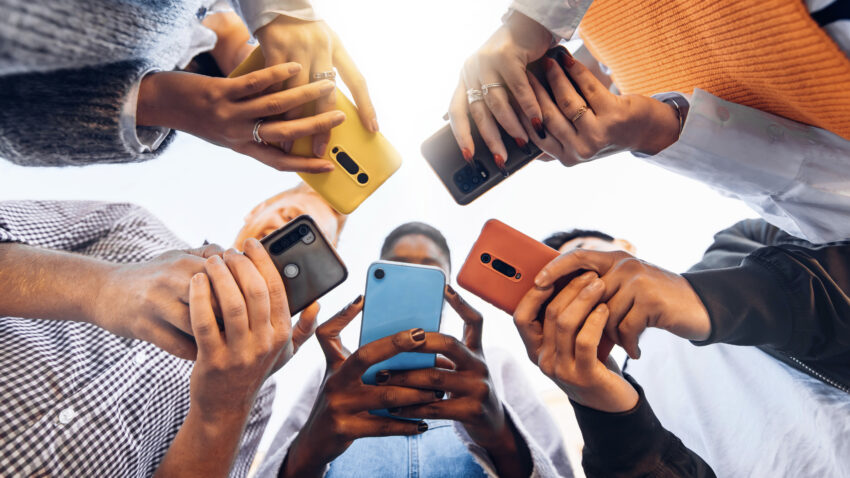
Share On Social!
Mental Health America (MHA) has published the Selfies, Social, & Screens: Navigating Virtual Spaces for Youth toolkit to help younger people’s technology habits.
“Parents, caretakers, and household members act as the main influence on a child’s use of technology,” said Schroeder Stribling, President and CEO of Mental Health America.
Let’s examine youth mental health, the helpful resources that this toolkit contains, and how you and others you know can benefit from it.
How Technology Use Impacts Mental Health
Virtual habits and activity can have a large impact on the mental health of young people.
“Children and teens are dealing with the intense emotions of growing up in a digital age where much of their lives are spent online,” according to MHA
97% of teens (ages 13-17) use the internet daily, with 95% having access to a smart phone.
55% of Latino teens say they are online almost constantly, compared with 37% of White teens.
Young people use many social media platforms, with the number one being YouTube, among others like TikTok, Instagram, and Snapchat.
How can this be harmful?
MHA highlights ways in which social media can fuel comparison among young people.
“Many young people today are struggling with body image and insecurities,” according to MHA. “Social media is full of classmates, influencers, and celebrities showing off their “perfect” looks – most of which are edited and filtered.”
Along with harming body image, social media can also cause FOMO or “fear of missing out.”
“Everyone misses out on different things occasionally, but it might feel like these missed opportunities are thrown in your face on social media,” MHA reports.
These feelings can ultimately lead to negative feelings like loneliness and low self-esteem while further increasing their time being spent on social media.
The Importance of Mental Health Resources
Around 17.7% of Latinos suffer from depression during their lifetimes. Only 7.2% of Latinos are diagnosed with depression compared to white Americans.
Young Latinos face many barriers when it comes to mental health support and resources.
“Evidence indicates that Hispanic and Latino youth have pressing mental health needs and are not receiving adequate mental health care,” according to Dr. Joshua A. Gordon, NIMH director, in a blog.
There can be many barriers that young Latinos face when it comes to receiving the help they need.
For instance, the COVID-19 pandemic also caused major setbacks, disproportionately affecting youth from minority communities, worsening the disparities experienced by these communities.
Similarly, immigration issues and stigma can contribute to challenges in young Latinos receiving treatment.
“Important barriers that impact utilization were stigma associated with MHS (mental health services), fear about legal issues, and concerns regarding racism and/or cultural miscommunication,” according to a study focusing on barriers to seeking mental health services in the Latino community.
Toolkit and Resources
The Navigating Virtual Spaces for Youth encourages young people to find healthy online communities to create a safe online space to connect with others. 
Setting boundaries, limiting screentime, and being cautious of what young people post and send are also important points that MHA highlights throughout the toolkit.
“Teens and young adults who reduced their social media use by 50% for just a few weeks saw significant improvement in how they felt about their weight and overall appearance compared with peers who maintained consistent levels of social media use,” according to MHA.
The toolkit from MHA is designed for schools, parents and caregivers, and of course young people.
The full toolkit can be downloaded through Mental Health America’s website. The Back-to-School toolkit provides many resources including:
- The full toolkit.
- Individual toolkit items like the resource guide and social media graphics.
- Fact sheets for adults and young people and
- Informational Posters.
Young people in need of more help can reach call or text the 988 Suicide & Crisis Lifeline at 988, help is available in both English and Spanish. A chat option is also available through 988lifeline.org.
Health of Your Community
The mental health of people, both young and old, is important.
But what about your community? Where can you look to examine the health of a community?
Look to the Salud America! Health Equity Report Card.
With this report card, you can explore local, Latino-focused information on what your county looks like in relation to several health-related issues including mental health, housing, transportation, and more.
See how your county compares to other counties across the state and the nation.
Use the data you find to educate others and share it with local leaders and groups to advocate for change in your area!
GET YOUR HEALTH EQUITY REPORT CARD!
Explore More:
Mental HealthBy The Numbers
142
Percent
Expected rise in Latino cancer cases in coming years




I know this is a two year old article, but Bias is another reason why some Hispanic people think about or attempt suicide. I’m actually part Filipino, German and English and I ended up looking stereotypically Hispanic and my surname is Spanish due to my Filipino side since the Spanish colonized the Philippines. I’m a woman though and I’ve thought about it for a number of reasons involving my health from a rare disorder that caused learning issues and also I have obvious cancer symptoms Ive tried getting help with. I’ve also been treated poorly and sometimes in very scary situations because of obvious Bias and Prejudice due to my appearance. I’m just saying Bias against people who are Hispanic and “look Hispanic” is a real thing. I apologize if it was in this article but I didn’t notice it, But I do apologize if its in there. I just think it needs to be addressed more. Thank You